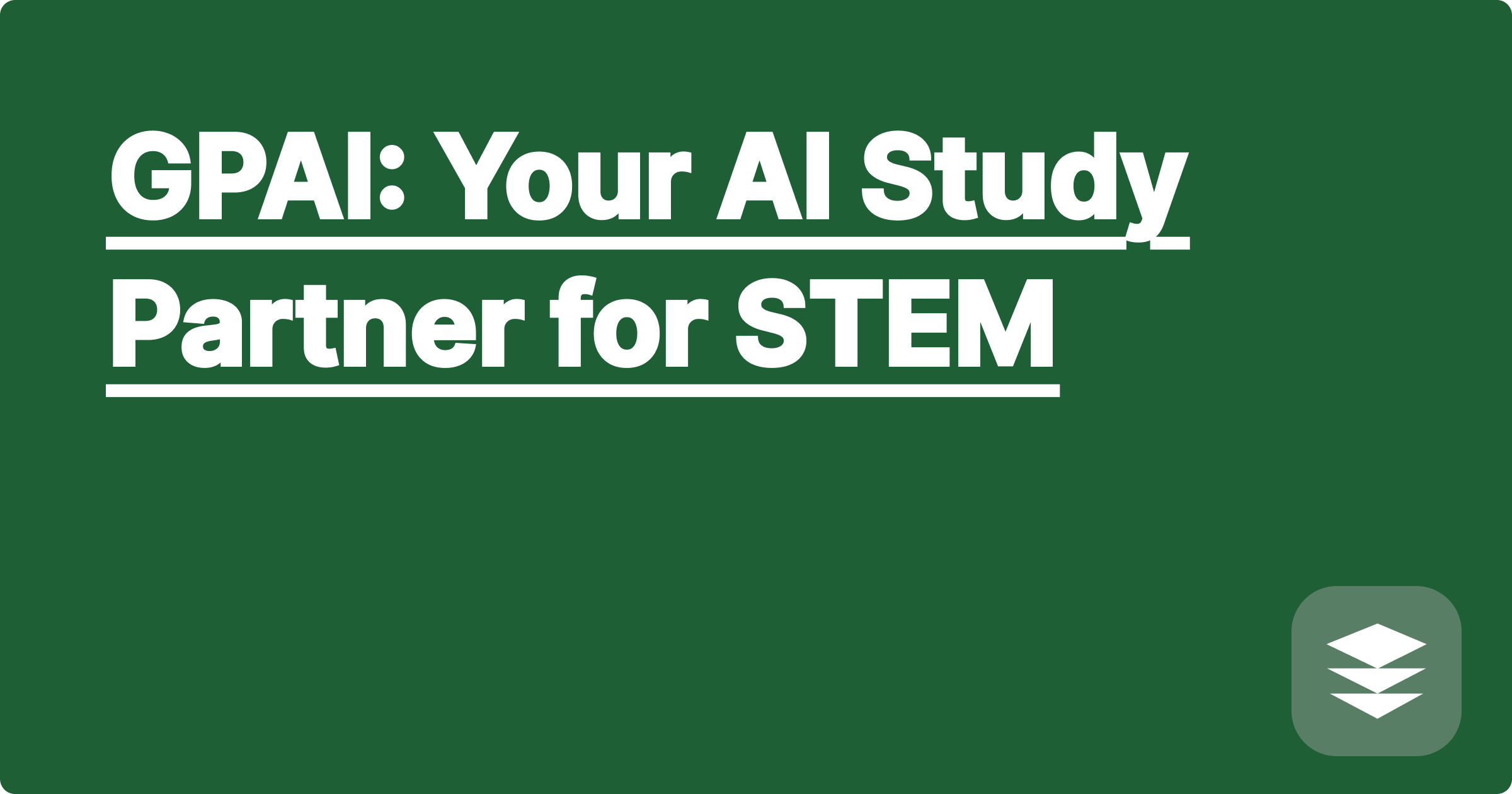
The demands of STEM fields are immense, requiring students and researchers to grapple with complex concepts, analyze vast datasets, and produce high-quality work under tight deadlines. The pressure to excel can be overwhelming. Fortunately, the rise of artificial intelligence offers a powerful suite of tools to navigate these challenges, acting as a virtual study partner and research assistant. AI can significantly boost productivity, freeing up valuable time and enabling deeper exploration of scientific concepts. This blog post explores how AI, particularly a conceptualized AI partner called GPAI (Generalized Personal AI), can revolutionize your STEM workflow, focusing on practical strategies for data analysis and visualization.
Imagine having an always-available assistant to help you sift through mountains of data, generate insightful visualizations, and even brainstorm research ideas. This is the promise of AI tools like GPAI. By leveraging these technologies, you can transform your research process, turning tedious tasks into streamlined workflows. This isn't about replacing human intellect, but rather augmenting it, allowing you to focus on the creative and analytical aspects of your work while AI handles the heavy lifting.
STEM fields are inherently data-driven. Whether you're a physicist modeling the universe, a biologist analyzing gene sequences, or an engineer designing a new bridge, data is the foundation of your work. However, the sheer volume and complexity of this data can be overwhelming. Traditional data analysis methods can be time-consuming and require specialized expertise. Furthermore, effectively visualizing this data to extract meaningful insights and communicate findings can be a significant hurdle. Students often struggle to balance the demands of data analysis with other critical aspects of their studies, leading to burnout and hindering their ability to reach their full potential. Researchers face similar challenges, often juggling multiple projects and needing to quickly process and interpret data to stay ahead of the curve.
AI tools like GPAI, and existing platforms like ChatGPT, Claude, and Wolfram Alpha, offer a powerful solution to these challenges. These tools can automate many of the tedious and time-consuming aspects of data analysis, from cleaning and preprocessing data to performing complex statistical analyses. They can also generate insightful visualizations, transforming raw data into easily understandable charts and graphs. Imagine using natural language to ask GPAI to "analyze the correlation between temperature and reaction rate" or "visualize the distribution of particle sizes in this sample." GPAI can then process your data and present the results in a clear and concise manner, saving you hours of manual work. Furthermore, AI can assist with literature reviews, helping you quickly identify relevant research papers and extract key information.
Let's walk through a hypothetical scenario: you're a chemistry student studying the kinetics of a chemical reaction. You've collected a dataset of reaction rates at different temperatures. First, you would upload your data into GPAI, which could be in a CSV, Excel, or other standard format. Next, you would use natural language to instruct GPAI to perform the desired analysis, for example, "determine the activation energy using the Arrhenius equation." GPAI would then process the data, apply the Arrhenius equation, and present the calculated activation energy. You could further instruct GPAI to "create a plot of ln(k) versus 1/T," visualizing the relationship between reaction rate and temperature. Finally, you could export the results and visualizations for inclusion in your lab report or research paper.
Consider a biology student analyzing gene expression data. Using GPAI, they could identify differentially expressed genes between two experimental conditions, visualize these differences using heatmaps, and perform pathway analysis to understand the biological significance of these changes. An engineering student could use AI to analyze the structural integrity of a bridge design, simulating different load conditions and visualizing stress distributions. A physics student could use AI to model the trajectory of a projectile, taking into account air resistance and other factors, and visualize the results in a 3D simulation. These are just a few examples of how AI can be applied across diverse STEM fields.
To maximize the benefits of AI in your STEM studies, start by familiarizing yourself with available AI tools and their capabilities. Experiment with different tools to find the ones that best suit your needs. Don't be afraid to ask for help and explore online tutorials and resources. Remember that AI is a tool, and its effectiveness depends on how you use it. Focus on developing a strong understanding of the underlying scientific principles and use AI to augment your analytical skills, not replace them. Critically evaluate the results generated by AI and always double-check your work. By integrating AI into your workflow strategically, you can significantly enhance your productivity, deepen your understanding of STEM concepts, and achieve academic success.
Finally, remember that the integration of AI in STEM is an ongoing evolution. Stay curious, explore new tools as they emerge, and embrace the potential of AI to transform your academic journey. By actively engaging with these technologies, you can position yourself at the forefront of innovation and unlock new possibilities in your STEM career. The future of STEM research is intertwined with AI, and by embracing these tools, you can empower yourself to make significant contributions to your field.
AI in Robotics: Efficient Simulations
GPAI: Your AI Study Partner for STEM
AI Research Notes: Organize Smartly
Ace STEM Exams: AI Study Partner
AI in CAD: Design Smarter, Faster
AI for Chemistry: Equation Ace
AI for Biology: Data Visualization
AI for Simulations: Optimize Results